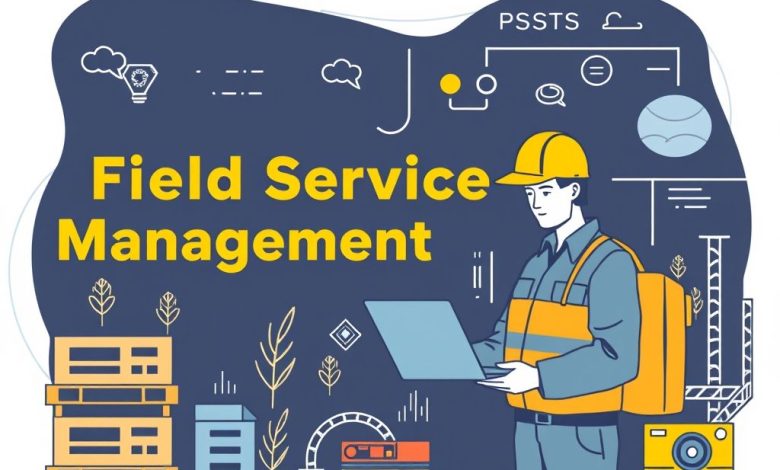Field Service Management ERP Solutions A Comprehensive Guide for Business Optimization

Introduction
Field Service Management (FSM) and Enterprise Resource Planning (ERP) solutions have become increasingly crucial for businesses operating in today’s fast-paced, technology-driven world. These systems work hand-in-hand to streamline operations, enhance efficiency, and improve customer satisfaction across various industries. In this article, we’ll explore the intersection of FSM and ERP solutions, examining how they complement each other and contribute to overall business success.
What is Field Service Management?
Field Service Management refers to the processes and technologies used to manage and coordinate tasks performed outside of a traditional office environment. It encompasses activities such as scheduling appointments, dispatching technicians, managing inventory, and tracking customer interactions. FSM software helps organizations optimize their field operations by providing real-time visibility into job status, resource allocation, and performance metrics.
Key components of FSM systems typically include:
- Scheduling and dispatching tools
- Mobile workforce management
- Inventory and asset tracking
- Customer relationship management (CRM)
- Reporting and analytics
The Role of ERP Solutions in Field Service Management
Enterprise Resource Planning (ERP) systems are designed to integrate all aspects of an organization’s operations into one cohesive platform. While traditionally focused on back-office functions like financials, human resources, and supply chain management, modern ERP solutions have expanded to incorporate field service capabilities.
ERP systems bring several benefits to field service operations:
- Centralized data management: All operational data is stored in a single database, ensuring consistency and reducing data silos.
- Real-time visibility: Managers can access current information on job statuses, resource availability, and customer interactions from anywhere.
- Improved decision-making: With comprehensive data at their fingertips, managers can make informed decisions quickly.
- Enhanced collaboration: ERP systems facilitate communication between field staff, dispatchers, and back-office personnel.
- Standardization: Consistent processes and data formats across departments promote efficiency and reduce errors.
Integration of FSM and ERP Systems
The integration of FSM and ERP solutions creates a powerful synergy that elevates both systems beyond their individual capabilities. This integration allows for:
- Seamless data flow: Information entered in the FSM system automatically updates the ERP system and vice versa.
- Unified view: Managers can see the entire picture of their operations, from initial customer request to final invoice processing.
- Optimized resource allocation: ERP data on available resources and FSM data on job requirements enable more efficient scheduling.
- Improved forecasting: Historical data from both systems helps predict future demand and resource needs.
Case Study: XYZ Corporation
XYZ Corporation, a leading provider of HVAC services, implemented an integrated FSM and ERP system to address several challenges:
- Inefficient scheduling process: Manual scheduling led to missed appointments and overbooked technicians.
- Lack of real-time visibility: Managers struggled to track job statuses and resource allocation.
- Inconsistent data across systems: Multiple software solutions created data silos and reduced operational efficiency.
After implementing the new system:
- Appointment no-shows decreased by 30%
- On-time completion rate improved by 25%
- Inventory management became more accurate, reducing stockouts by 15%
- Management reporting became more comprehensive and actionable
Challenges and Considerations
While the integration of FSM and ERP systems offers numerous benefits, organizations should be aware of some potential challenges:
- Implementation complexity: Integrating two complex systems requires significant planning and resources.
- Data security concerns: Ensuring the integrity and privacy of sensitive business information is crucial.
- Customization needs: Organizations may require tailored solutions to meet their unique requirements.
- Training and adoption: Staff must be trained to effectively use the new integrated system.
Conclusion
The convergence of Field Service Management and ERP Solutions represents a significant advancement in operational efficiency for businesses across various industries. By leveraging these integrated systems, organizations can streamline their processes, enhance decision-making capabilities, and ultimately deliver better service to their customers.
As field service managers navigate the ever-evolving landscape of business operations, embracing FSM and ERP integration will position them at the forefront of innovation and competitiveness. The future of field service management is not just about managing jobs; it’s about orchestrating entire customer experiences through technology-driven, data-informed strategies.
By investing in robust FSM and ERP solutions, organizations can unlock new levels of productivity, customer satisfaction, and long-term success in today’s fast-paced business environment.




